
Manduca rustica, the rustic sphinx, is a moth of the family Sphingidae. The species was first described by Johan Christian Fabricius in 1775.
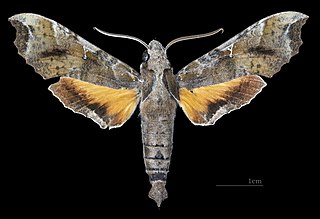
Callionima calliomenae is a moth of the family Sphingidae.
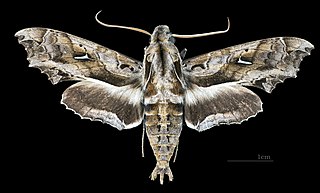
Hemeroplanes triptolemus is a moth of the family Sphingidae.

Pachylia ficus, known as the fig sphinx, is a moth of the family Sphingidae. It lives from the northern tip of South America in Uruguay through Central America to the southern tip of the United States straying into Arizona and Texas.

Xylophanes amadis is large moth of the Family Sphingidae.

Xylophanes ceratomioides is a moth of the family Sphingidae. It is known from Mexico, Belize, Costa Rica, French Guiana, Bolivia, Argentina and Venezuela, down into southern Brazil. Rare vagrants have been found up to southern Arizona.

Manduca brasiliensis is a moth of the family Sphingidae.

Cephonodes hylas, the coffee bee hawkmoth, pellucid hawk moth or coffee clearwing, is a moth of the family Sphingidae. The species was first described by Carl Linnaeus in 1771. A widely distributed moth, it is found in the Near East, Middle East, Africa, India, Sri Lanka, Japan, Southeast Asia and Australia.

Theretra boisduvalii is a moth of the family Sphingidae.

Acosmeryx naga is a moth of the family Sphingidae. It was described by Frederic Moore in 1858, and is known from Japan, Tajikistan, Afghanistan, China and South-east Asia.
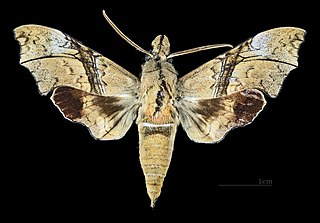
Aleuron iphis is a moth of the family Sphingidae. It was described by Francis Walker in 1856
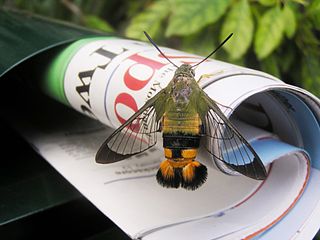
Cephonodes kingii, the gardenia bee hawk, is a moth of the family Sphingidae.
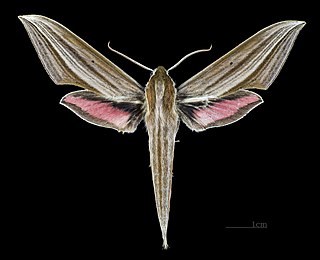
Xylophanes neoptolemus is a moth of the family Sphingidae.
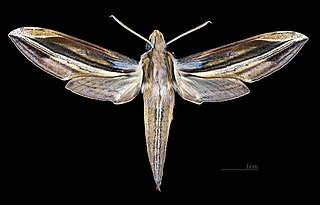
Xylophanes pyrrhus is a moth of the family Sphingidae.
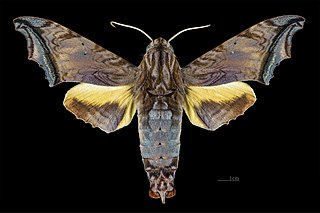
Nyceryx stuarti is a species of moth in the family Sphingidae.
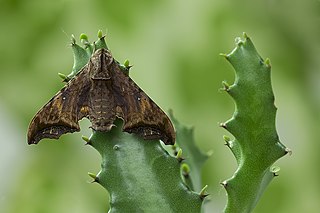
Nyceryx riscus is a moth of the family Sphingidae.

Eumorpha obliquus is a moth of the family Sphingidae. It is found from Belize, Guatemala, Nicaragua and Costa Rica south to Bolivia. It is also present in Brazil and Guadeloupe.
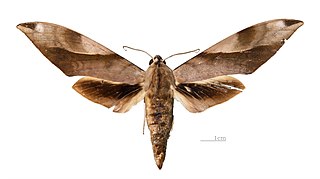
Clanis schwartzi is a species of moth of the family Sphingidae. It is found from central and southern China to northern Laos and northern Vietnam.

Ambulyx substrigilis, the dark-based gliding hawkmoth, is a species of moth of the family Sphingidae. It was described by John O. Westwood in 1847.
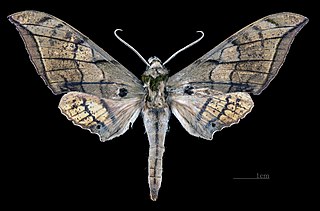
Ambulyx johnsoni is a species of moth of the family Sphingidae.
























